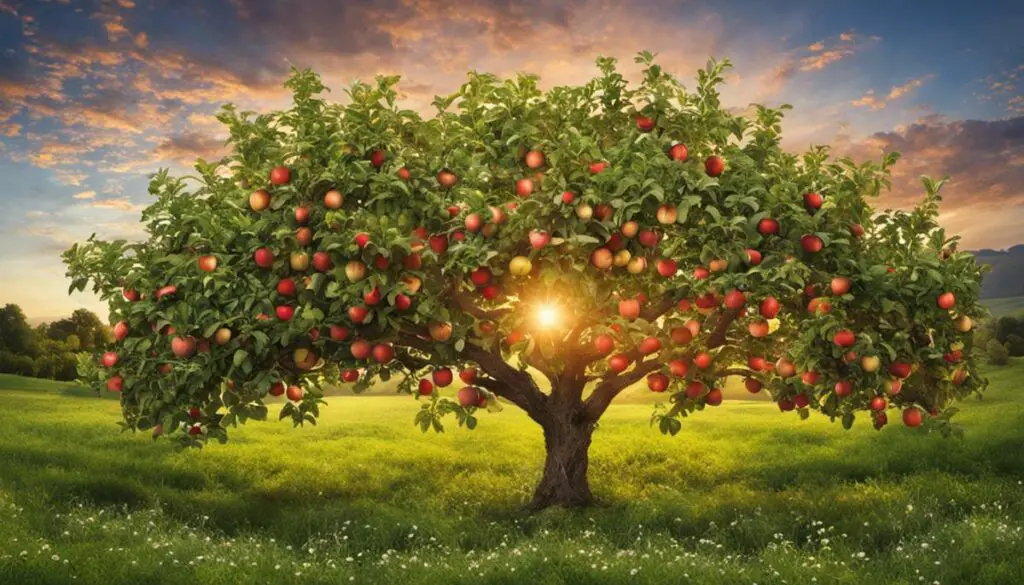In the vast tapestry of horticulture, apple trees hold a special place, not only for the flavorful bounty they present but also for the enchanting spectacle of their blooming period. An exploration into this botanical wonder reveals a richly complex and rewarding cycle of life that transpires from seed to full-grown tree. This journey examines the careful dance of nature’s pollinators, the artistry of propagation and cultivation, and the deliberate vigilance needed to prevent and identify pests and diseases. Moreover, it revels in the aesthetic and symbolic magnificence of apple blossoms, a sight to behold and a treasure in various cultural contexts around the globe.
Understanding the Life Cycle of Apple Trees
The Fascinating Life Cycle of an Apple Tree: From Seedling to Blossoming Beauty
Embrace the captivating world of apple trees, an exceptional hobby that rewards patience and love. It provides plenty of unique experiences: from the tending of a sapling to the delightful moment of viewing your tree’s first blooms. Dive into the entrancing journey to understand not just the key stages of an apple tree’s life cycle, but also when the magical process of blooming occurs.
One cannot talk about the life cycle of an apple tree without starting from its humble beginnings – the tiny apple seed. Apple trees grow from small seeds that germinate and sprout in the early spring. Under favorable conditions, a seed usually germinates in about 70 days, breaking the topsoil to greet the world as a sapling.
This sapling then embarks on its transformative journey for the next few years. During a rapid growth phase which lasts for about five years, the tree extends its branches and roots, seeking both the sky and earth as it matures. With time, proper care, patience, and a fair amount of good sunlight, the sapling grows into a young apple tree.
For about three to six years, the newly mature tree remains in a relative state of calm before the truly exciting phase kicks in – blooming! Prior to the blooms, the tree will grow spur-like branches where future fruits and flowers will grow. The blossoming phase usually occurs in spring, between April and June, depending on the variety and geographic location of the tree. Eager hobbyists often keep a vigilant eye in early spring for the first hint of apple blossoms.
Blooms are a captivating sight, with clusters of flowers ranging from white to pink, adorning the apple tree. But it’s not just the beauty of the blooms that excite hobbyists – blooming is a pivotal point in an apple tree’s life cycle. It’s a sign that the tree is ready for pollination, leading to the subsequent fruit development phase.
Once pollination occurs, usually with the aid of wind or insects, the flowers will wither, leaving behind the all-important ovary. Encased within each ovary is the potential to become a delicious apple. The development of the apple takes several months, climaxing in late summer or fall, when the apples are ready to be picked.
Understanding the life cycle of an apple tree— from its start as a small seed to the blooming phase and beyond— is a thrilling journey filled with anticipation and reward. It’s truly a remarkable testament to nature’s resilience and unparalleled beauty. It affirms that the endless patience and care poured out by countless hobbyists, gardeners, and apple enthusiasts are indeed worth it in the end.
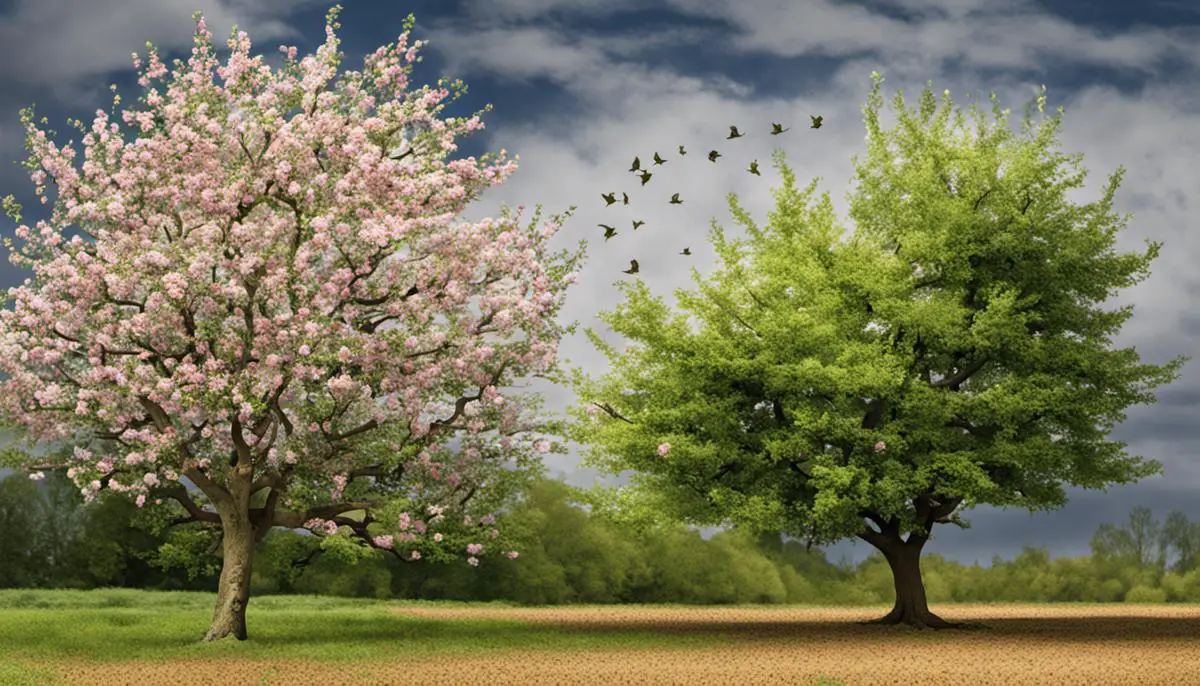
Propagation and Cultivation of Apple Trees
Delving deeper into the enchanting world of apple trees, it’s vital to comprehend the importance of propagation and cultivation. They are requisites for optimal blooming and, ultimately, luscious, juicy apple production. Here, we usher you into an understanding of the two paramount practices, providing you an edge to become a proficient apple grower.
Propagation of apple trees is primarily done through grafting. This is an age-old technique that involves fusing a bud or scion (the prospective apple tree) from one tree with the rootstock of another, which acts as the life force contributing growth vitality to the grafted tree. Grafting ensures the offspring share the desired attributes of the parent tree, be it disease resistance, hardiness, or fruit quality.
Seminal to successful grafting is choosing the right scion and rootstock. The scion should be from a healthy, productive tree with admirable fruiting qualities. The rootstock, selected based on disease resistance and adaptability to soil & climate, remains dormant until spring. Optimal grafting time is late winter, just before buds start to swell. Firmly secure the graft using grafting tape, stimulating healing and union formation.
Transitioning to cultivation, this process is essential for maintaining the health and productivity of apple trees. It involves practices like watering, feeding, pruning, and protecting trees from pests. These practices begin right after grafting and continue throughout the apple tree’s life.
Watering must be regulated since both under or over-watering are detrimental and can inhibit blooming. It’s critical that the soil allows for adequate drainage, and the tree receives approximately 1 inch of water per week, inclusive of rainfall.
Feeding entails fertilizing with deciduous tree-appropriate nutrients. Nitrogen is essential for apple trees, but an appropriate balance of phosphorus and potassium is also vital for encouraging vigorous growth. Fertilizer is best applied in early spring and late autumn.
Timely pruning, typically done in late winter to early spring, stimulates healthier tree growth and better fruit production. Remove any dead or diseased branches, and open up the tree canopy to allow for adequate light and air circulation.
In the realm of pests and diseases, vigilance is key. Regularly monitor for signs of pests or disease, and take immediate action when problems are spotted. Organic methods, like the use of pest-repelling plants or beneficial insects, are often preferred in apple tree care.
In conclusion, propagation and cultivation hold the keys to optimal apple tree blooming. A well-propagated and carefully cultivated apple tree rewards with abundant, vibrant blossoms, setting the stage for the treasured bounty of apple harvest that follows. As with all rewarding things in life, it takes patience, care, and understanding – but the fruits of your labor are worth every effort!
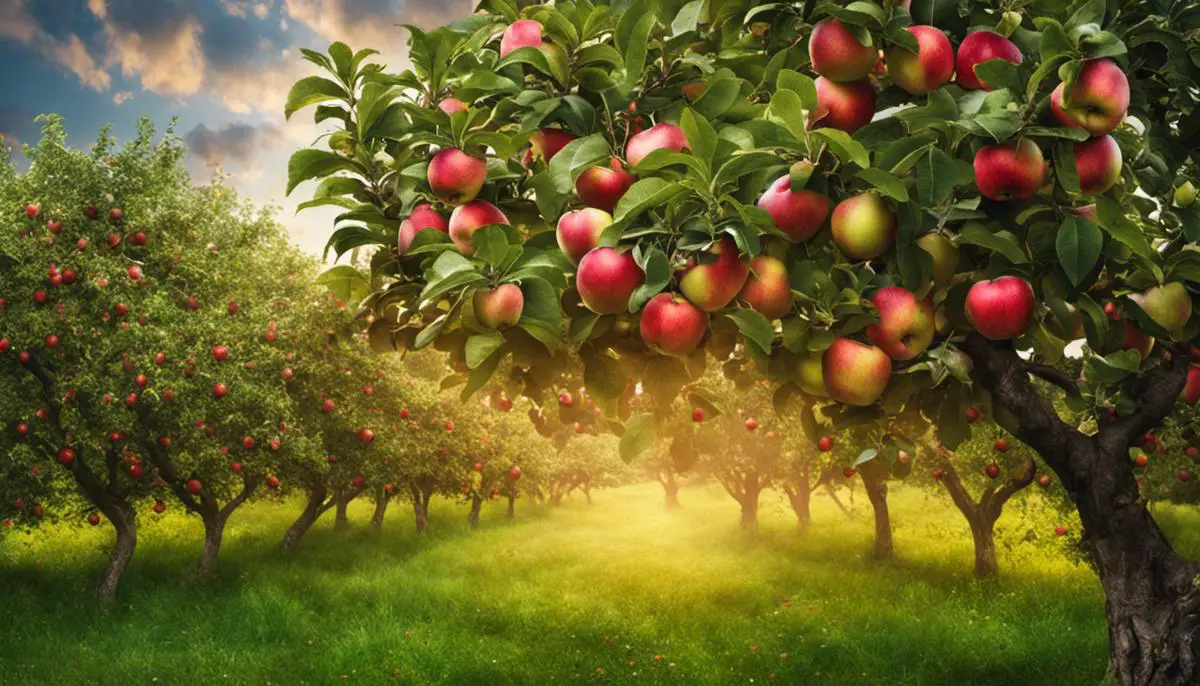
Preventing and Identifying Pests and Diseases in Blooming Apple Trees
Emerging from the intensity of the bloom period, apple trees navigate a labyrinth of threats. The dendritic giants shoulder the responsibility of developing crisp and juicy apples, while simultaneously combating pests and diseases. The interconnected cycle of nature can quickly turn antagonistic, with multiple adversaries seeking to invade the paradise of apple trees.
Common pests that often assail apple trees include Codling Moths and Apple Maggots. Adults of the Codling Moth species lay eggs on the apple fruit and leaves. The emerging larvae burrow into the apple to feed, often leaving behind visible signs of damage. As for the Apple Maggot, they’re not as courteous. These pests invasively tunnel into the apples without leaving an external clue to their hidden presence.
To prevent these pests from festering, consider pheromone traps as a viable tool. These traps imitate the scent of bugs of the opposite sex, diverting and trapping several males, thereby disrupting the mating process. Other practices include using sticky cards specifically impregnated with the pheromone to trap female moths. Regularly check traps and adjust the strategy as needed. Don’t forget, nurturing beneficial insects such as ladybugs and lacewings by providing them with a hospitable habitat can also work wonders. These beneficial insects are natural predators of several apple tree pests.
The resplendent beauty of apple trees is equally susceptible to diseases. The two most notorious diseases troubling apple trees are Apple Scab and Fire Blight. Apple scab, caused by the fungus Venturia inaequalis, leads to unsightly blemishes on the fruit and leaves. Fire Blight, on the other hand, is a bacterial disease that causes branches to appear as if scorched by fire.
To prevent Apple Scab, sanitation is key. Eradicate and discard fallen leaves during the autumn season to reduce the fungal spores’ overwintering. Regularly scheduled treatments with a fungicide should also be part of your apple tree protection program. For Fire Blight management, pruning is a potent strategy. Integral to the health of your trees, remove symptomatic branches during winter, least favours the bacteria. If Fire Blight still manages to infiltrate, consider applying a streptomycin spray in the bloom period when the bacteria abundantly colonizes.
Never underestimate the role of outside factors in mitigating disease and pest pressures. Regularly monitoring weather patterns and adjusting care routines to accommodate changes plays an essential role. For instance, a stretch of wet weather can induce Fire Blight, while Caterpillar outbreaks often follow mild winters.
Armored with this knowledge and cognizant of the threats, you can safeguard your blooming apple trees from the multitude of pests and diseases waiting to strike. With constant vigilance and proactive measures, you ensure the reward of bountiful, luscious fruits, worth every bit of patience and dedication vested in your apple tree’s journey.
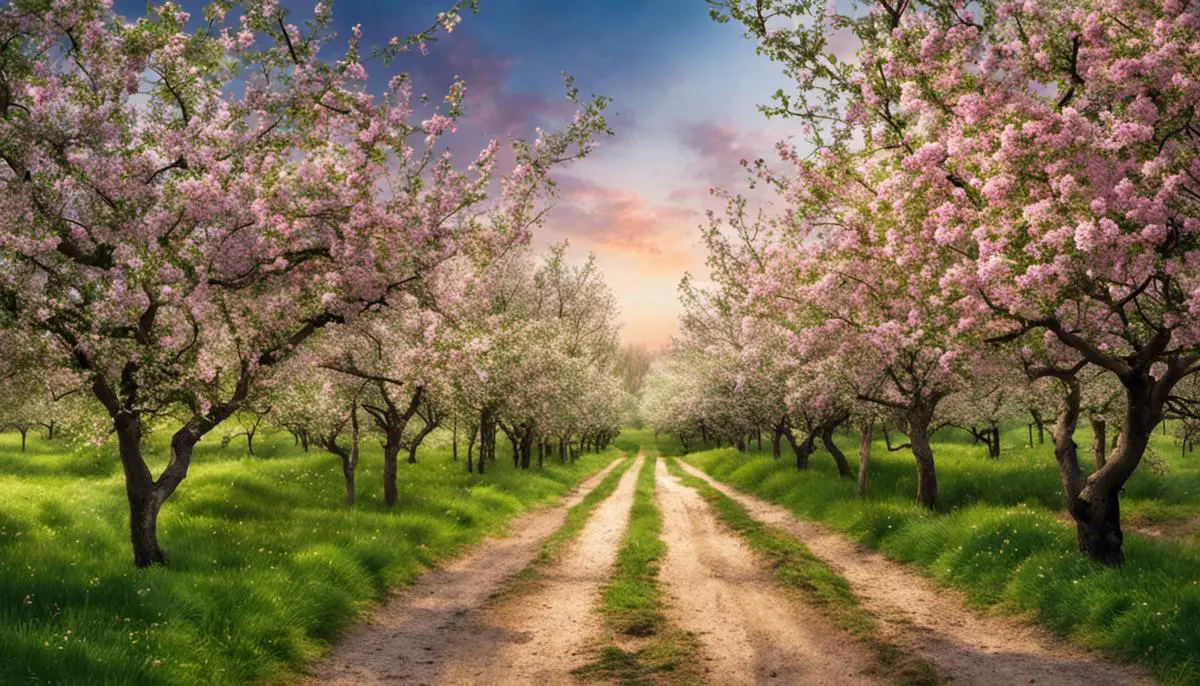
The Aesthetic and Symbolic Beauty of Apple Blooms
Now that we’ve explored the various stages of an apple tree’s life cycle, the importance of proper cultivation, and the vigilance necessary to keep pests and diseases at bay, let’s delve deeper into an aspect of these trees that has been garnering praise for centuries – their enchanting apple blossoms. Understanding why apple blossoms are so aesthetically pleasing not only enhances our admiration for these little wonders of nature but also fosters a deeper connection with the hobby we cherish.
Each spring, apple trees go through a metamorphosis, shedding their bare winter appearance for a dazzling display. At the crux of this transformation are the apple blossoms that clothe the trees with numerous delicate blooms seemingly dusted with hues of pink and white. The brilliance of pastel colors, combined with the playful flutter of petals in the breeze, makes apple blossoms a spectacle of beauty. But the visual appeal goes beyond the blooms themselves. The contrast of the petals against the robust, woody branches of the apple tree, and the lush, verdant cloak formed by the leaves, accentuates the blossoms’ inherent charm.
Equally enticing is the sweet, subtly invigorating fragrance that fills the air during blooming. This scent subtly intertwines with the visual feast to create an immersive, multisensory experience that draws us in – akin to nature’s own orchestra playing a symphony for the senses. The combination of their pleasing visuals and enticing aroma makes apple blossoms a favored subject in visual and literary arts.
But the aura of apple blossoms stretches beyond mere visual and sensory pleasure. These delicate beauties carry profound symbolic meanings across multiple cultures. In Chinese culture, for instance, an apple blossom represents peace and is considered an emblem of affection and adoration. On the other hand, in Celtic lore, it symbolizes youth, beauty, and magic. Similarly, the Victorians regarded apple blossoms as symbols of preference, nodding to the idea that the apple tree was the preferred choice for its fruits and blossoms.
Moreover, as bearers of future fruits, they symbolize the promise of future prosperity and bounty, making them significant icons during celebrations and traditions. The Japanese tradition of Hanami, a custom of enjoying the transient beauty of flowers, often extends toward viewing apple blossoms.
Through their aesthetic charm and symbolic meanings, apple blossoms hold a unique place not only in horticulture but also in cultural narratives worldwide. Their fleeting existence is a reminder of life’s ephemeral nature and the rhythm of the seasons – a rhythm we, as hobbyists, have grown to appreciate in our journey with apple trees. Every year, the wait for the apple tree to don its floral mantle allows us to partake in this organic symphony, cementing our connection with this beloved hobby.
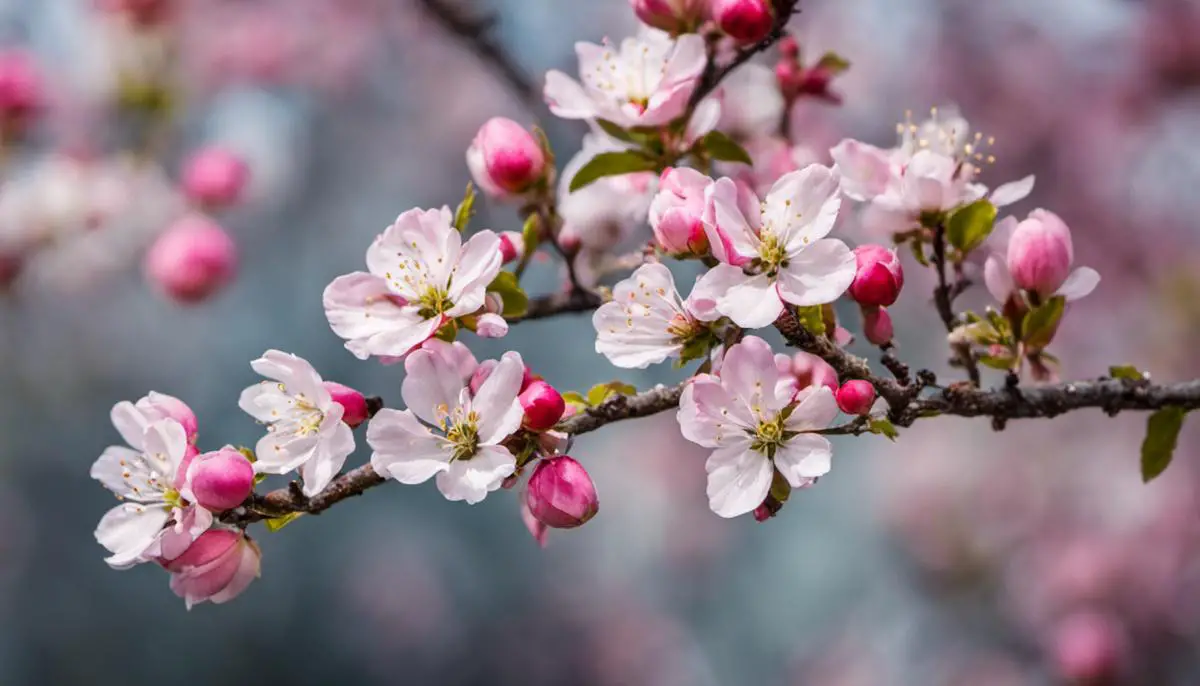
Ultimately, apple trees stand as robust symbols of nature’s tireless work and elaborate systems. Their blossoms serve not only as heralds of upcoming harvest but also as exquisite canvases of nature’s artistry, deeply ingrained into the fabric of human culture. To cultivate and care for these trees is both a privilege and a responsibility, requiring knowledge, commitment, and a profound respect for natural processes. The entrancing spectacle of blooming apple trees extends an open invitation to delve deeper, fostering a better understanding and appreciation of the world around us.
